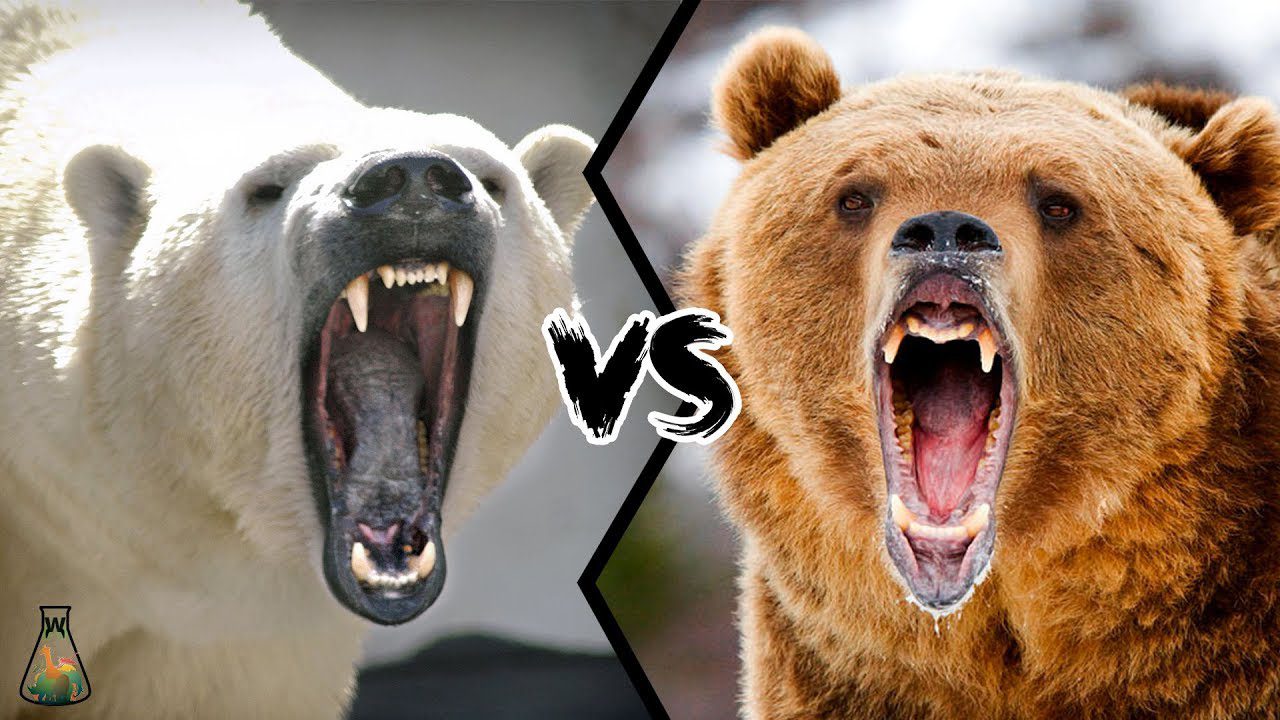Polar bears and grizzly bears are strong predators that can take down large prey and defend themselves in hostile situations. Polar bears are larger, have a specialized diet consisting of mainly seals, and are found in the harsh and frozen environment of the Arctic. Grizzly bears are smaller, have a more varied diet that changes throughout the year, and are found in North American forested areas. Both bears have adapted to their respective habitats and lifestyles and need to be protected and conserved to ensure their survival and well-being.
Polar Bear vs. Grizzly Bear: Which is Stronger?
Introduction
Both polar bears and grizzly bears are powerful and intimidating animals. They are predators that can take down large prey and defend themselves in hostile situations. However, there are notable differences between the two, including their physiology, habitat, behavior, and diet. In this article, we will compare and contrast polar bears and grizzly bears to determine which is stronger.
Physiology
Polar bears are the largest land carnivores, weighing between 350 to 700 kilograms (770 to 1500 pounds). They have a thick layer of blubber and fur to insulate themselves from the cold Arctic weather. Polar bears have sharp claws and teeth for hunting and killing their prey. They are excellent swimmers and can hold their breath underwater for up to two minutes, using their front paws to propel themselves through the water.
Grizzly bears, on the other hand, are smaller and lighter than polar bears, weighing between 180 to 360 kilograms (400 to 800 pounds). They have a less dense fur coat and a different body shape, with a prominent hump on their shoulders. Grizzly bears have powerful jaws and claws for digging, climbing, and defending themselves. They are also good swimmers and can run up to 50 kilometers per hour (30 miles per hour) for short distances.
Habitat
Polar bears are found in the Arctic region, mainly on the ice pack and surrounding land. They are adapted to living in a harsh and frozen environment, with limited access to food and resources. Polar bears are solitary animals that roam over vast distances in search of prey or mates. They rely on sea ice to hunt seals, their primary food source, and may travel long distances to find suitable hunting grounds.
Grizzly bears, on the other hand, are found in North America, mainly in forested areas with a mix of grasslands, rivers, and mountains. They are adapted to living in a diverse and changing environment, with access to a variety of food sources and resources. Grizzly bears are social animals that can form family groups or live alone, depending on the season and the availability of food. They rely on berries, nuts, fruits, roots, insects, and small mammals for their diet, but can also hunt larger animals like moose or elk.
Behavior
Polar bears are known for their aggressive and territorial behavior, especially during the mating season or when defending their cubs. They are skilled hunters that use stealth, patience, and strength to catch their prey. Polar bears may also scavenge from human settlements or whale carcasses, but this behavior is not typical or sustainable. They are classified as vulnerable species due to habitat loss, climate change, and hunting.
Grizzly bears are less aggressive than polar bears but can also be dangerous when provoked or surprised. They are opportunistic feeders that can adapt to different food sources depending on the season and location. Grizzly bears may also scavenge from human settlements or garbage dumps, which can create conflicts with humans. They are classified as threatened species due to habitat loss, hunting, and conflicts with humans.
Diet
Polar bears have a specialized diet that consists mainly of seals, which they hunt on the sea ice using their sense of smell and patience. They may also eat fish, birds, eggs, and carrion, but these are not their primary food sources. Polar bears need to consume large amounts of fat and protein to survive the long periods of fasting, especially during the summer or fall when the ice melts and the seals are harder to catch.
Grizzly bears have a more varied diet that changes throughout the year. In the spring and summer, they eat mainly plants, including berries, roots, grasses, and leaves. In the fall, they eat more high-calorie foods like nuts, fruits, and salmon. In the winter, they may hibernate or feed on stored food or carcasses. Grizzly bears can also hunt larger prey like moose or elk, but this is not a significant part of their diet.
Conclusion
In conclusion, both polar bears and grizzly bears are strong and impressive animals that have adapted to their respective habitats and lifestyles. However, polar bears are stronger in terms of size, weight, and hunting skills, while grizzly bears are stronger in terms of versatility, agility, and diet. Ultimately, the strength of a bear depends on the context and the environment in which it lives. Both polar bears and grizzly bears need to be protected and conserved to ensure their survival and well-being.
